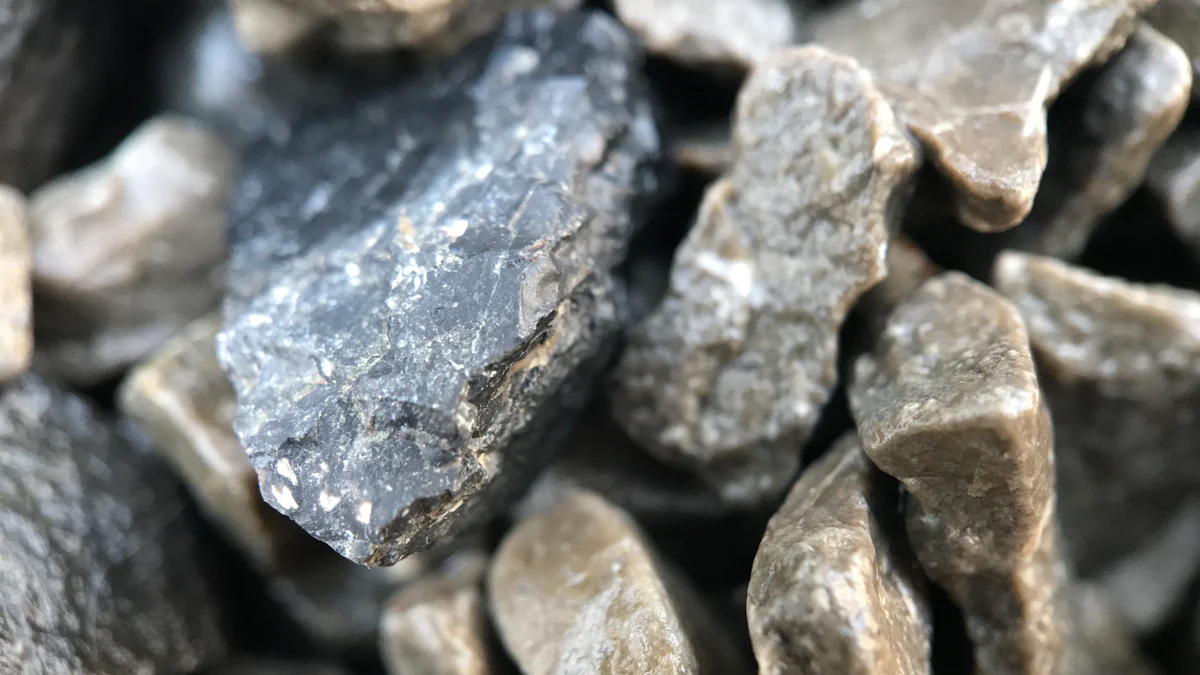
Sic coated graphite susceptors are graphite components enhanced with a SiCコーティング that features a silicon carbide layer. These advanced materials play a pivotal role in semiconductor manufacturing, particularly in epitaxial layer growth. Their Sic coated surface ensures exceptional thermal stability, uniform heat distribution, and resistance to contamination. These properties make them indispensable for achieving precision and reliability in high-tech processes.
要点
- SiC-coated graphite helps make semiconductors by spreading heat evenly. This is important for growing thin layers on wafers.
- The SiC layer stops damage and dirt, making better wafers. This improves how well semiconductor devices work.
- SiC is cheaper and moves heat better than other materials like tantalum carbide. This makes it a popular choice for making semiconductors.
The Role of SiC-coated Graphite in Semiconductor Manufacturing

Epitaxial layer growth and wafer manufacturing
Epitaxial layer growth is a cornerstone of semiconductor manufacturing. This process involves depositing a crystalline layer on a substrate to create high-quality wafers. Sic coated graphite susceptors play a vital role in this operation. They provide a stable platform for wafers during high-temperature processes, ensuring precise control over the deposition environment. Their silicon carbide coating minimizes contamination risks, which is critical for maintaining the purity of the epitaxial layers. Manufacturers rely on these susceptors to achieve uniformity in wafer production, which directly impacts the performance of semiconductor devices.
Importance of MOCVD equipment in thin-film deposition
Metal-Organic Chemical Vapor Deposition (MOCVD) equipment is essential for thin-film deposition in semiconductor fabrication. Sic coated graphite susceptors are integral components of this equipment. They facilitate the deposition of thin films by offering excellent thermal conductivity and chemical resistance. These properties ensure consistent film thickness and composition, which are crucial for advanced semiconductor applications. The use of these susceptors enhances the efficiency of MOCVD systems, enabling the production of high-performance devices such as LEDs and power transistors.
Thermal stability and uniformity in semiconductor processes
Thermal stability and uniformity are critical in semiconductor manufacturing. Sic coated graphite susceptors excel in maintaining consistent temperatures during high-temperature processes. Their silicon carbide coating prevents thermal degradation, ensuring long-term reliability. This stability reduces the risk of defects in semiconductor devices, improving overall production yields. By providing uniform heat distribution, these susceptors contribute to the precision required in modern semiconductor fabrication.
Benefits of SiC Coating on Graphite Susceptors

Addressing challenges of pure graphite: corrosion and contamination
Pure graphite, while valuable in many industrial applications, faces significant limitations in semiconductor manufacturing. Its susceptibility to corrosion under high-temperature conditions and exposure to reactive gases often leads to material degradation. This degradation compromises the structural integrity of susceptors and introduces contaminants into the manufacturing process. Contamination can severely impact the quality of semiconductor wafers, reducing device performance. By applying a silicon carbide coating, manufacturers mitigate these challenges. The SiC layer acts as a protective barrier, shielding the graphite from corrosive environments and preventing particle generation. This enhancement ensures a cleaner and more reliable production process.
Enhanced properties of SiC coating: thermal conductivity and chemical resistance
について SiCコーティング significantly improves the functional properties of graphite susceptors. Silicon carbide exhibits excellent thermal conductivity, enabling efficient heat transfer during high-temperature operations. This property ensures uniform heating, which is critical for processes like epitaxial layer growth. Additionally, the chemical resistance of SiC protects the susceptor from aggressive chemicals used in semiconductor fabrication. This resistance extends the lifespan of the component, reducing the need for frequent replacements. Sic coated graphite susceptors, therefore, offer a combination of durability and performance that meets the stringent demands of modern semiconductor manufacturing.
Key characteristics of effective SiC coatings: density, uniformity, and durability
Effective SiC coatings possess specific characteristics that enhance their performance. High density ensures minimal porosity, reducing the risk of gas penetration and contamination. Uniformity across the coating surface guarantees consistent thermal and chemical properties, which are essential for precision manufacturing. Durability allows the coating to withstand repeated thermal cycles and mechanical stresses without degradation. These attributes make Sic coated graphite susceptors a reliable choice for critical semiconductor processes, ensuring consistent results and long-term operational efficiency.
Industry Trends and Alternatives
Alternative coatings like tantalum carbide (TaC)
Tantalum carbide (TaC) has emerged as a promising alternative to silicon carbide (SiC) in certain semiconductor applications. Known for its exceptional hardness and high melting point, TaC offers superior resistance to wear and extreme temperatures. These properties make it suitable for environments where SiC may face limitations.
注: TaC-coated susceptors are particularly advantageous in processes requiring ultra-high temperatures or exposure to aggressive chemical environments.
However, TaC coatings come with challenges. Their higher production costs and limited availability can make them less accessible for widespread use. Additionally, TaC’s thermal conductivity, while adequate, does not match the efficiency of SiC in heat transfer. Manufacturers must weigh these factors when selecting the appropriate coating for their specific needs.
Comparison of SiC with other materials in performance and cost
SiC stands out for its balance of performance and cost-effectiveness. Compared to TaC, SiC offers better thermal conductivity and is more affordable. While materials like aluminum nitride (AlN) provide excellent thermal properties, they lack the chemical resistance of SiC.
| 素材 | 熱伝導率 | Chemical Resistance | Cost |
|---|---|---|---|
| 炭化ケイ素(SiC) | High | Excellent | Moderate |
| Tantalum Carbide (TaC) | Moderate | Superior | High |
| Aluminum Nitride (AlN) | Very High | Moderate | High |
This comparison highlights SiC’s versatility, making it the preferred choice for many semiconductor applications.
Trends in susceptor technology for advanced applications
Advancements in susceptor technology focus on enhancing performance for next-generation semiconductor devices. Researchers are exploring hybrid coatings that combine SiC with other materials to achieve tailored properties.
ヒント Hybrid coatings aim to optimize thermal conductivity, chemical resistance, and durability for specialized applications.
Additionally, manufacturers are adopting precision manufacturing techniques, such as chemical vapor deposition (CVD), to improve coating uniformity and reduce defects. These innovations align with the industry’s push toward smaller, more efficient semiconductor devices, ensuring that susceptor technology keeps pace with evolving demands.
SiC-coated graphite susceptors remain indispensable in semiconductor manufacturing. Their ability to combat contamination and thermal instability ensures consistent wafer quality. These components enhance MOCVD equipment by improving thermal conductivity and chemical resistance. Their reliability and efficiency make them a cornerstone of advanced semiconductor processes, driving innovation in the industry.
よくあるご質問
What makes SiC-coated graphite susceptors essential in semiconductor manufacturing?
Their thermal stability, chemical resistance, and uniform heat distribution ensure precision in processes like epitaxial layer growth, reducing contamination and improving wafer quality.
How does the SiC coating enhance the performance of graphite susceptors?
The coating improves thermal conductivity and chemical resistance, extending the susceptor’s lifespan and ensuring consistent performance in high-temperature semiconductor processes.
Are there alternatives to SiC-coated graphite susceptors?
Yes, alternatives like tantalum carbide-coated susceptors exist. However, SiC-coated graphite offers a better balance of cost, thermal conductivity, and chemical resistance for most applications.






